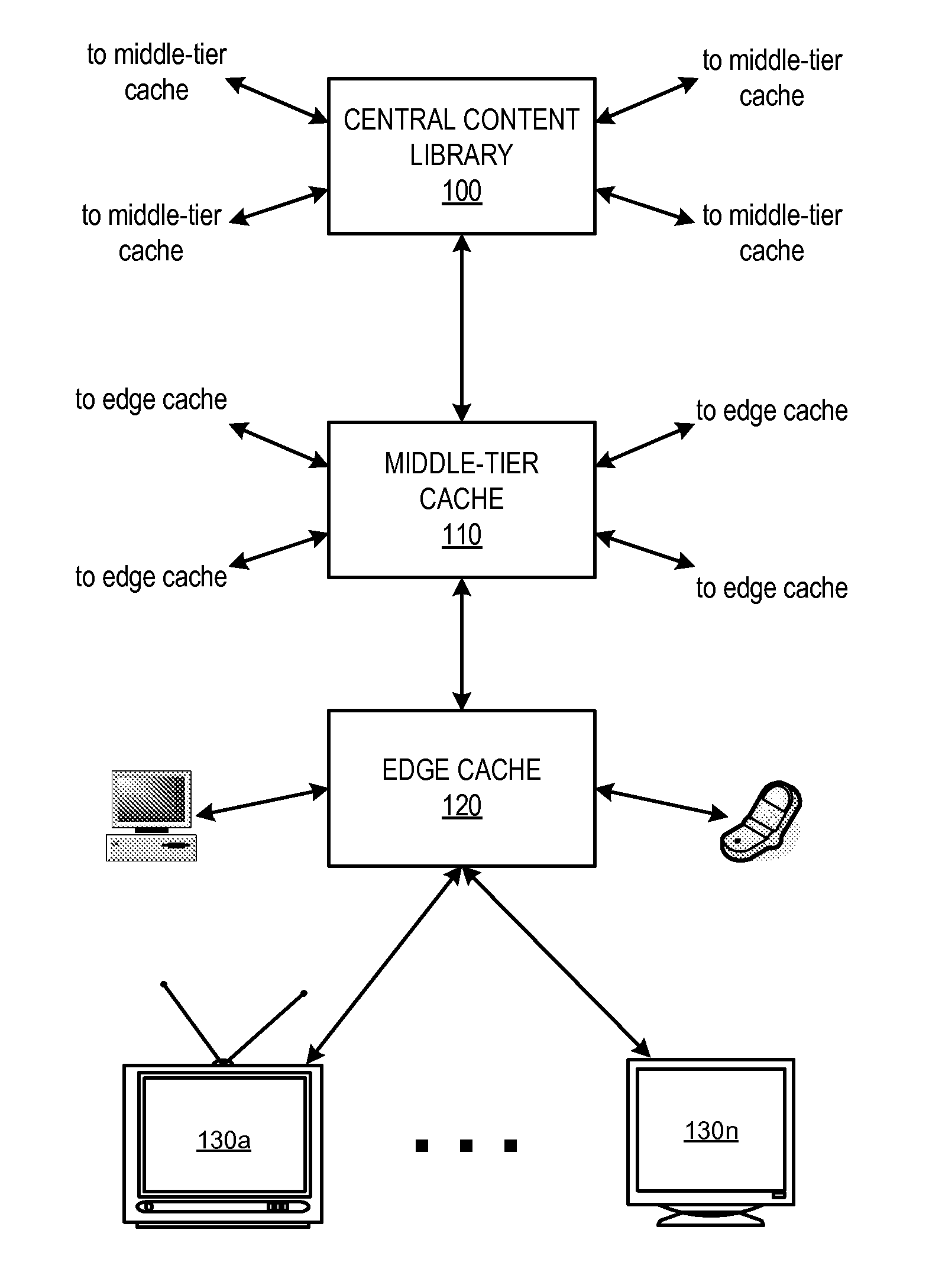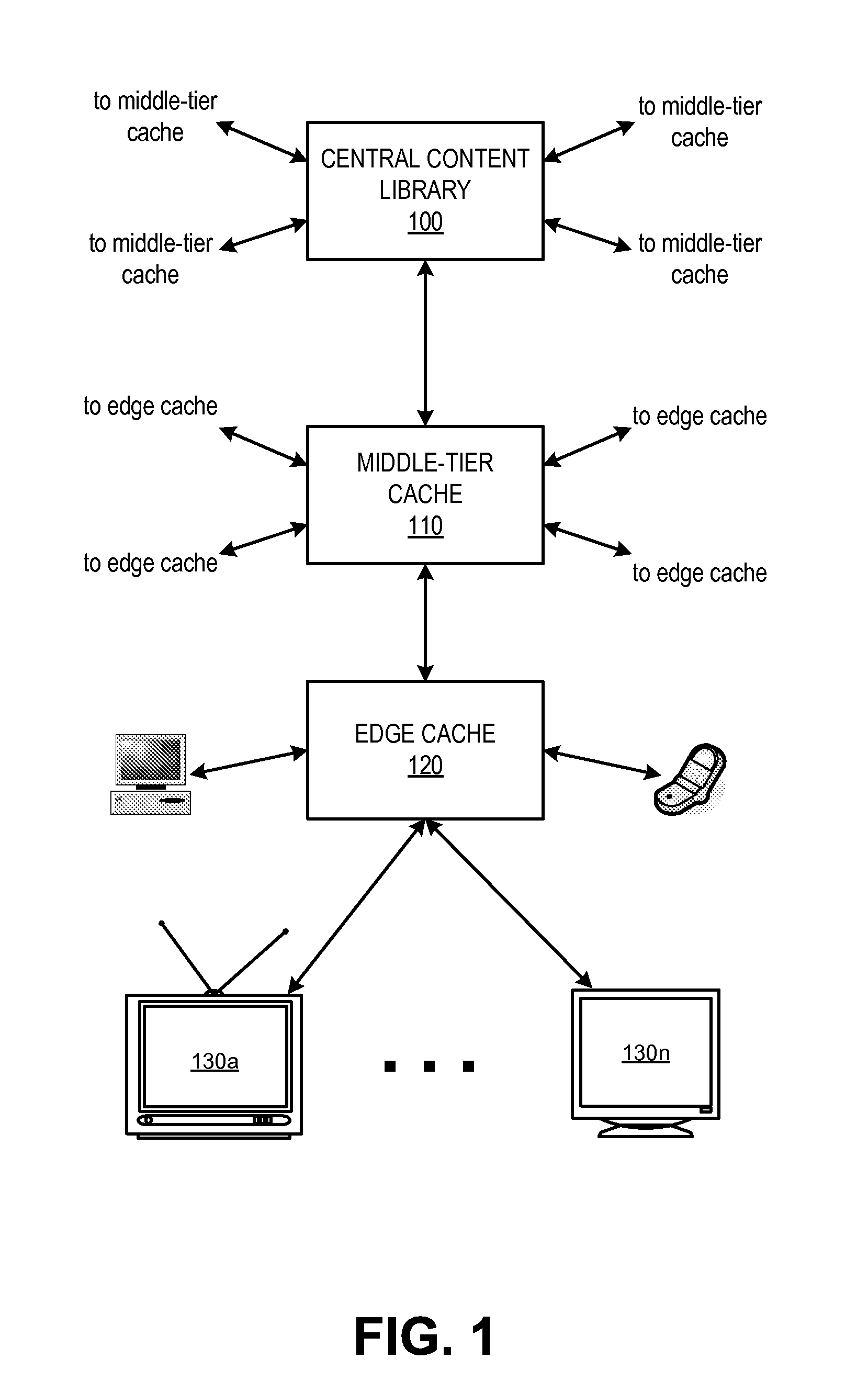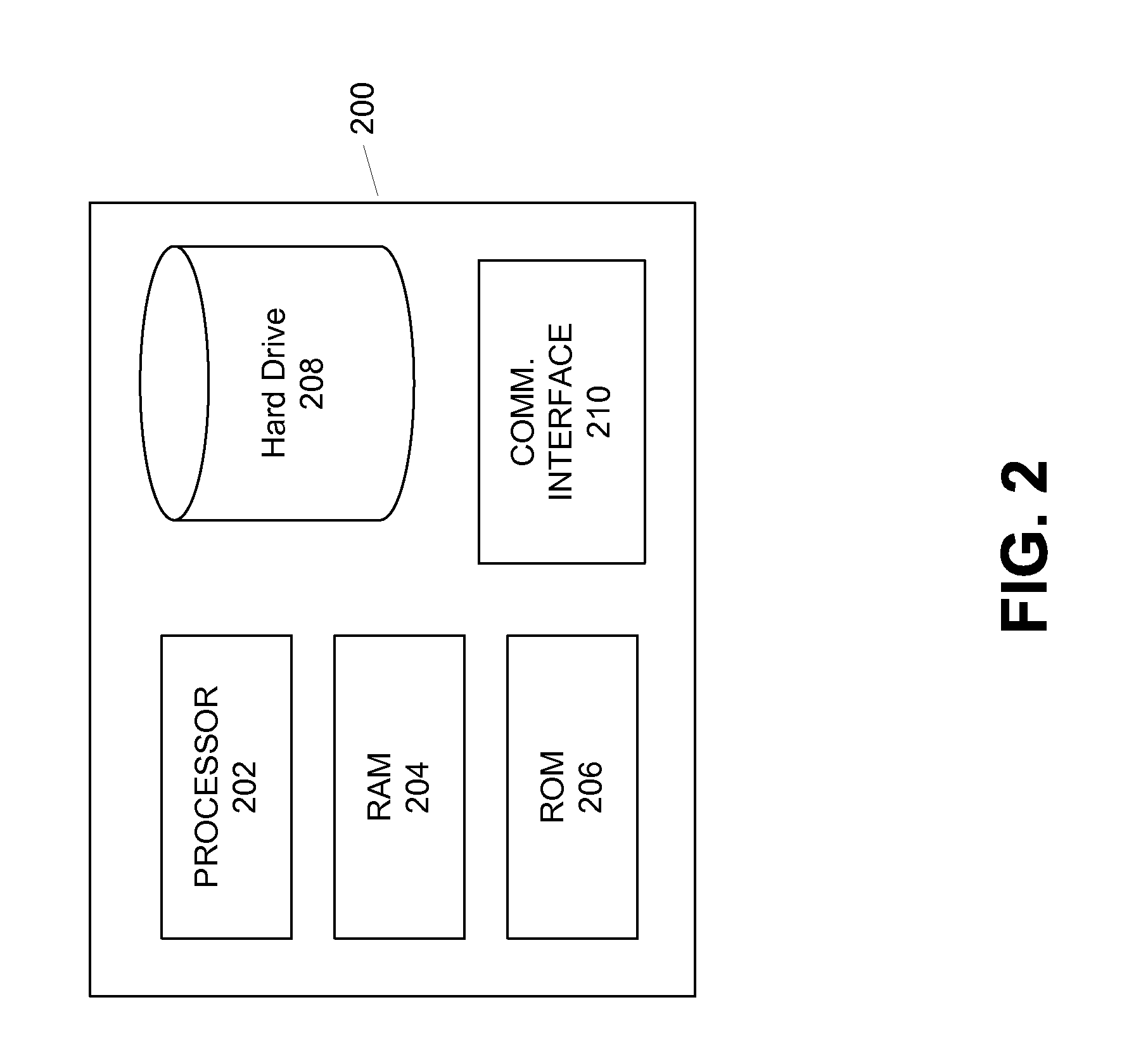Cache Management In A Video Content Distribution Network
a video content and network technology, applied in the field of video content cache management in the video content distribution network, can solve the problems of limited cache space, high cost of establishing and operating local caches in the cdn, and relatively minor network cost of streaming rare titles
- Summary
- Abstract
- Description
- Claims
- Application Information
AI Technical Summary
Benefits of technology
Problems solved by technology
Method used
Image
Examples
Embodiment Construction
[0022]To provide large on demand libraries, system operators must manage and maintain increasingly complex content distribution networks (CDNs). For example, FIG. 1 is a block diagram showing elements of a content distribution network that may store and distribute content (e.g., video content, audio content, software, data, applications, other network resources, etc.) to users throughout the network. A central content library 100 (e.g., central facility or head end) may include VOD servers, servers for receiving and encapsulating VOD assets, management servers, etc. In this example, the central content library 100 may store all of the content available in the content distribution network, and may distribute the content via multiple middle-tier caching devices 110 (e.g., regional head ends). The central content library 100 may communicate with the middle-tier caches 110 over a backbone network such as a national backbone network, with the middle-tier caches 110 also including facilit...
PUM
 Login to View More
Login to View More Abstract
Description
Claims
Application Information
 Login to View More
Login to View More - R&D
- Intellectual Property
- Life Sciences
- Materials
- Tech Scout
- Unparalleled Data Quality
- Higher Quality Content
- 60% Fewer Hallucinations
Browse by: Latest US Patents, China's latest patents, Technical Efficacy Thesaurus, Application Domain, Technology Topic, Popular Technical Reports.
© 2025 PatSnap. All rights reserved.Legal|Privacy policy|Modern Slavery Act Transparency Statement|Sitemap|About US| Contact US: help@patsnap.com



